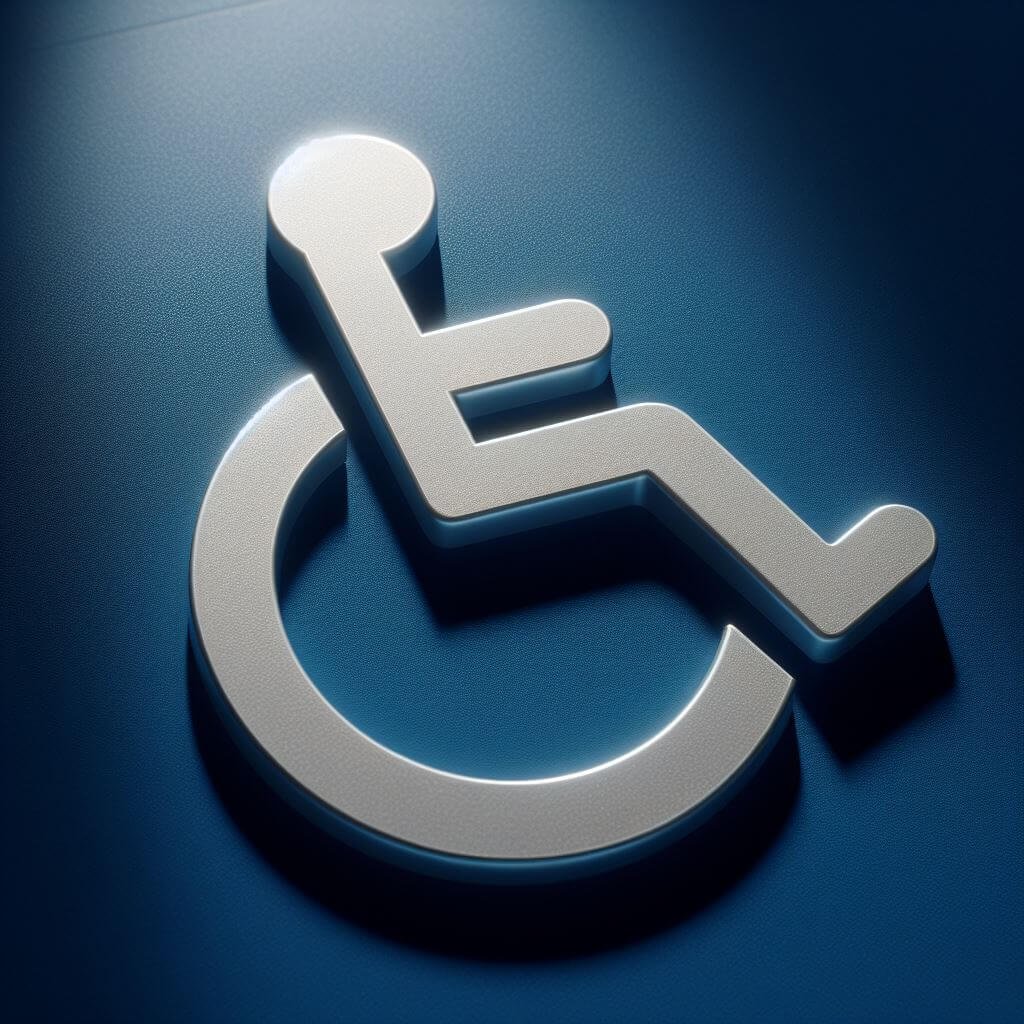Accessibility as a Smart Business Investment
Many business owners underestimate the economic opportunity that comes with creating an accessible facility. Accessibility isn’t just about compliance—it’s about expanding your customer base and enhancing your reputation.
Avoid receiving a pre-litigation letter for non-compliance with the ADA
Pre-litigation letters have become a frequent concern for businesses alleged to be non-compliant with the ADA. While the aim of the ADA is to ensure equal access for people with disabilities, pre-litigation letters often provoke anxiety among business owners, who may face costly legal battles or settlement demands if they do not take immediate action to correct violations.
A Guide to ADA Compliance in California
The ADA and Chapter 11 of Title 24 are both sets of building standards aimed at ensuring accessibility for individuals with disabilities. However they are associated with different jurisdictions and have some differences in scope and technical requirements. In this article, we will explore some of the differences between the two standards and how they may interact.
Americans with Disabilities Act (ADA)
The Americans with Disabilities Act (ADA) stands as a monumental legislative achievement in the realm of civil rights and accessibility. The enactment of the ADA was a watershed moment that aimed to dismantle barriers and foster inclusivity for individuals with disabilities. To this day, the ADA is a cornerstone of disability rights legislation.
Accessible Passenger Loading Zones
Accessible passenger loading zones serve as a gateway to transportation for people with disabilities, elderly individuals, and those with temporary mobility impairments. These zones facilitate safe embarkation and disembarkation from various services and modes of transportation, including: valet, shuttles, taxis, ride share services, etc. By providing a designated space close to entrances, drop-off and loading zones eliminate the barriers that hinder individuals with mobility challenges from participating fully in public life.
Website Accessibility
In recent years, the Americans with Disabilities Act (ADA) has become an increasingly important topic in the world of website design and development. The ADA requires that all public-facing websites be accessible to people with disabilities, including those with visual, auditory, physical, and cognitive impairments. Failure to comply with accessibility guidelines for websites can prevent people with disabilities from accessing digital services and result in legal complaints.
Accessible Urinals
Every public restroom is required to provide at least one accessible toilet, so you may be asking yourself “Why are accessible urinals required?”
The Americans with Disabilities Act (ADA) is a federal civil rights law that prohibits discrimination against people with disabilities. The ADA Standards for accessible design and the California Building Code (CBC) provide specific requirements for accessible elements within the built environment to meet that mandate. For example, parking, ramps, elevators, drinking fountains, signs, toilets and even urinals have minimum accessibility standards that must be met.
Why do stairs have ADA Requirements?
Have you ever wondered why stairs have accessibility requirements even though they are a feature of an accessible route? ADA standard requirements for stairs aim to make them accessible and usable for everyone, including people with disabilities. These standards include requirements for risers, treads and handrails.
Accessible Baby Changing Tables
While the Americans with Disabilities Act (ADA) does not directly address baby changing tables in the ADA Standards, baby diaper changing stations are still required to be accessible to people with disabilities. The 2010 ADA Standards includes requirements for the basic features of baby changing tables including: work surfaces, operable parts, reach ranges, protrusion limits, approaches and clearances. Baby diaper changing tables are fixed elements and therefore, they must comply with applicable requirements for each of the features listed.
ADA Requirements For Floor Mats
Floor mats can be compliant with the Americans with Disabilities Act (ADA) depending on the characteristics of the mat and the location where it is being used. This blog post explores some of the basic requirements.
ADA Compliance Checklist
An ADA checklist typically includes a list of questions about some of the common architectural elements found at places of public accommodation. The checklist may include questions about the accessibility of the building's entrance, parking, ramps, stairways, elevators, restrooms, dining, counters and other common area / elements.
10 Myths About The ADA
The Americans with Disabilities Act (ADA) is a federal law that prohibits discrimination against people with disabilities. The civil rights law protects various aspects of life, including employment, education, housing and of course, equal access to goods and services. Despite being a well-established law enacted in 1990, there are several myths and misconceptions about the ADA that continue to persist. Here are 10 common myths about the ADA.
Are Historical Buildings Exempt From The ADA?
The ADA provides an exemption for qualified historic properties that are listed on the National Register of Historic Places or properties that are designated as historic under state or local law. If buildings or facilities are designated as historical as defined by the ADA, then they may be eligible to meet alternative minimum standards if full compliance with the regular code would threaten or destroy the historical significance.
Who Is Responsible For ADA Compliance?
The Americans with Disabilities Act (ADA) applies to both landlords and tenants. Both parties may share responsibility for compliance and so it is important to understand what is required and who is responsible for maintaining compliance prior to executing a commercial lease.
The Unruh Civil Rights Act
The Unruh Civil Rights Act is a California state law that prohibits discrimination on the basis of sex, race, color, religion, ancestry, national origin, disability, medical condition, genetic information, marital status, or sexual orientation in business establishments and housing accommodations. It is named after Jesse Unruh, a former speaker of the California State Assembly who sponsored the bill that became the law in 1959.
California & ADA Improvement Assistance Programs
For many businesses located at existing facilities that pre-date the ADA (1990), there are also costly improvements that may not be Readily Achievable to address immediately. The good news is that there are financial assistance programs that can help lessen the cost disability access compliance.
2025 Valuation Threshold
Every year, the Division of the State Architect (DSA) publishes the updated Valuation Threshold for alterations, structural repairs or additions to existing buildings in California. This year, the 2025 Valuation Threshold has been increased to $203,611.00 and is effective immediately.
Grade 1 Braille vs Grade 2 Braille
Grade 2 braille is a system of braille that uses contractions, or shortened versions of words, to represent more words in a smaller amount of space. This allows for more efficient reading and writing in braille, and also allows for a higher reading speed. Grade 2 braille is an extension of Grade 1 braille, which represents each letter of the alphabet, number and punctuation mark with a single braille cell.
Pool Lift Alternatives
The ADA Standards for Accessible Design and Chapter 11B of the California Building Code (Title 24) both require accessible means of entry at hotel swimming pools and spas. The most common form of accessible entry into a pool, spa or wading pool is the Pool Lift. The primary reason that pool lifts are so commonly used is because they are relatively easy to install at existing pools. The downside to using pool lifts is the ongoing maintenance to keep them safe and operable to use without the need for assistance. From a design standpoint, pool lifts are not very esthetically pleasing.
In this post, we will explore some of the other accessible means of pool entry.
Hotel Pool Lifts
The ADA is a federal law that prohibits discrimination against individuals with disabilities in places of public accommodation, such as hotels. The law requires that hotels, including their pools and spas, be accessible to individuals with disabilities. Additionally, California Building Code, which applies to all buildings and structures in California, also requires pools and spas to be accessible to people with disabilities. This means that pools must have an accessible means of entry and exit, such as pool lifts or sloped entries. Hotel spas must provide an accessible means of entry such as a pool lift, transfer wall or transfer system.




















